Tag: septic shock

Risk of Sepsis and Mortality Among Patients with COPD Treated With Angiotensin-Converting Enzyme Inhibitors or Angiotensin Receptor Blockers
Angiotensin receptor blockers were associated with lower rates of sepsis and mortality than angiotensin-converting enzyme inhibitors in the patients with chronic obstructive pulmonary disease. The similar findings were also... read more

Early Goal-directed Therapy Using a Physiological Holistic View
If peripheral perfusion-targeted resuscitation improves 28-day mortality, this could lead to simplified algorithms, assessing almost in real-time the reperfusion process, and pursuing more physiologically sound objectives.... read more

Resuscitation Guided by Volume Responsiveness Does Not Reduce Mortality in Sepsis
The results of this systematic review and meta-analysis indicate that a volume responsiveness (VR) guided resuscitation strategy in sepsis patients confers no mortality benefit compared with usual care. The methods of... read more

Terlipressin for Septic Shock Patients
Catecholamines are commonly used in septic shock but face limitations of their hypo-responsiveness and adverse events due to high dose. Terlipressin is a synthetic vasopressin analog with greater selectivity for the V1-receptor.... read more

Speedy sepsis care slows in-hospital mortality
Sepsis and septic shock patients treated within 3 hours had lower in-hospital mortality rates than those treated between hours 3 and 12, based on data from nearly 50,000 adult patients. The findings were presented at an international... read more
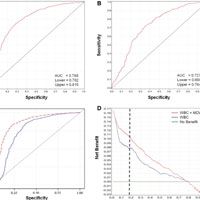
Effective Sepsis Detection with Peripheral Blood Monocyte Distribution
This study evaluated the diagnostic accuracy of peripheral blood monocyte distribution width alone and in combination with white blood cells (WBCs) count for early sepsis detection in the emergency department. An monocyte... read more
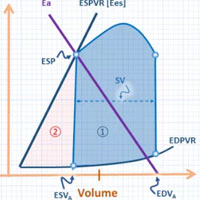
Venous Doppler and Veno-Cardiac Coupling
Concepts have been clanging around my head since I participated in Philippe Rola's sedulous Hospitalist & Resuscitationist Conference in Montreal. Initially, the abstractions of ventriculo-arterial coupling, Guytonian physiology... read more
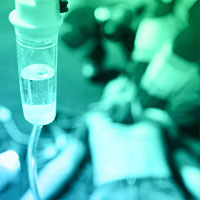
Vasopressors and Inotropes for Shock Syndromes
Vasopressors and inotropes are cornerstones in the management of shock syndromes. Understanding vasopressors' receptor activity and resultant pharmacological response enables clinicians to select the ideal vasopressor(s)... read more
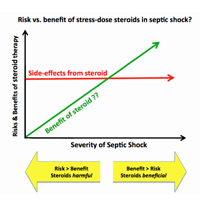
Steroids in Septic Shock – Four Misconceptions and One Truth
The utility of steroids in sepsis has been debated passionately for decades. There is hope that steroids might improve mortality, but also fear that they could increase infectious complications. Practice varies widely. What... read more

Sepsis: Personalization vs. Protocolization?
The history of intensive care has been littered with too many false dawns. Old management dogma, now derided, have been replaced by new and equally resolute convictions, many of which will, in time, undoubtedly follow a similar... read more
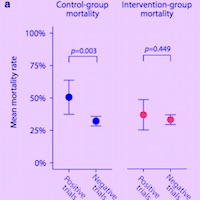
Positive Outcomes, Mortality Rates, and Publication Bias in Septic Shock Trials
Out of 65 eligible septic shock trials, 14 did not have a clearly defined control group (two standards of care were compared) and were excluded. For the 51 remaining trials, control-group mortality ranged between 15.9%... read more

Minimizing Catecholamines and Optimizing Perfusion
The main goal of hemodynamic resuscitation in shock is to improve tissue perfusion and oxygenation. As these cannot be directly evaluated at bedside in routine practice, physicians are left with surrogates such as perfusion... read more

Measuring Lactate vs. Capillary Refill in Guiding Resuscitation in Shock
Capillary refill is as least as good as measuring lactate in guiding resuscitation efforts in septic shock. Moreover, using a lactate-driven resuscitation strategy led to use of more pressors and more IV fluid administration... read more

Clinician Perception of a Machine Learning–Based Early Warning System Designed to Predict Severe Sepsis and Septic Shock
In general, clinical perceptions of Early Warning System 2.0 were poor. Nurses and providers differed in their perceptions of sepsis and alert benefits. These findings highlight the challenges of achieving acceptance of predictive... read more








